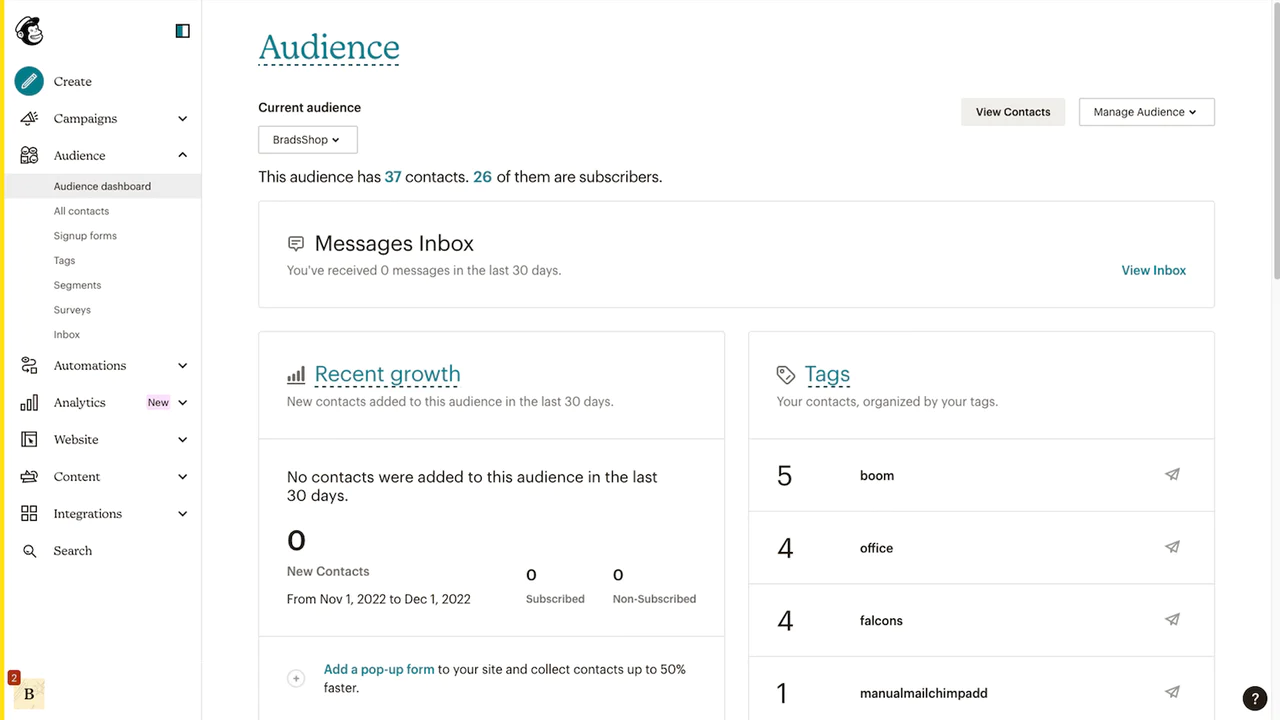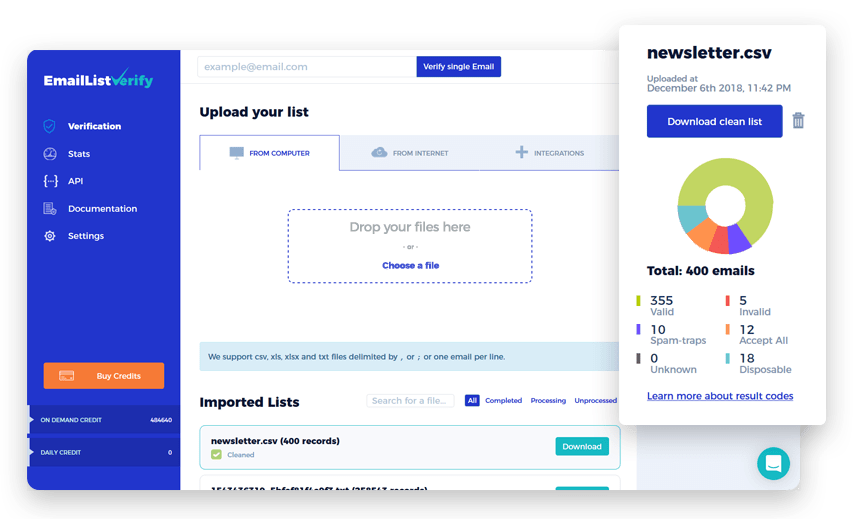
Are you unsure of what makes the best email management apps work? Or which email management software is the right one for your company? The first step is understanding why email organization matters. Also, the way your company can benefit from it.
Usually, amid busy workdays and seasons, you lack organization in your professional email. That leads to delayed responses, loss of files and missed communication within the office.
As in: you might need to set up filters to differentiate between messages coming in from your coworkers and messages coming in from your clients. Or maybe you receive a lot of different documents to work on, but they need to be uploaded somewhere else.
Usually, cleaning up your Gmail is a task in itself, but the traditional methods require some time upfront. In this article, we will explore the main concerns of work inboxes and the best email management apps to stay organized.
Why you need to manage your email well
Here’s a scenario: a customer support team receives dozens of messages every day from the client base. They need to go through the queries and answer them as quickly as possible, but give a detailed response. However, due to the volume of incoming mail, it’s hard to keep track. If a message reaches their inbox during a busy time, it might get buried under other urgent tasks.
The customer, however, is upset, because they never got a customer service email back. The support agent is still overwhelmed. And more messages are reaching the inbox.
Another part of a digital workspace is internal collaboration. Usually, when collaborators have to work together, they need to have an organized system. For instance, when collaborating on a document, you need to know where the drafts are in your email, to share them with whoever needs to proofread.
These scenarios – and many more – are the reason why the best email management software exists: to make sure you stay organized.
The best email management app resources
The basics of an email management app are keeping your messages organized in the same space. However, not all software is created equal. Some offer role-specific tools that can take your email management even further. Here are a few of them:
Filtering and organizing
Gmail has its own filters, but they aren’t always efficient. Mostly because they are exclusive to your own inbox. And what happens when you have to forward emails to collaborators? These tags are lost because you aren’t sharing the filter criteria.
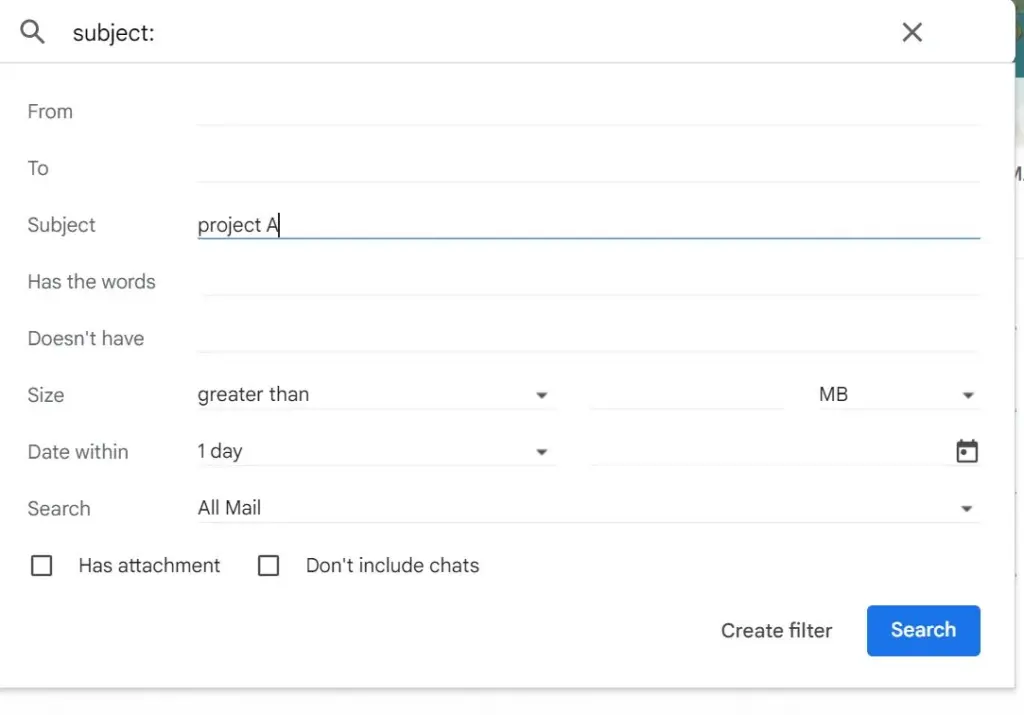
Ideally, a good email management app has shared filters and allows you to group messages according to multiple criteria, such as date received, read/unread, sender’s address, keywords and much more. That way, you can have a company-wide system to find messages easily.
You can also organize by folders and give specific access to different roles, minimizing task collision risks.
Connection and collaboration
When you work on email-based tasks, you might need to add extra context when collaborating with colleagues. However, having to share full email threads is confusing, which is why some email management software have other options.
One of them is a live chat function, in which you can talk to your collaborators while you work together on tasks. Another resource that’s common among the best email management apps is a notes function. That is, when you work on an email, you can add personal notes that aren’t seen by anyone unless you share them. This is a great tool for sales teams and customer service agents.
Automation
Another part of email management that affects leaders specifically is task allocation and message distribution. How can you share incoming mail with each collaborator while making sure the work is distributed fairly? Some tools have round-robin email assignments to help business managers run their logistics.
You can also opt for an email management app with automation rules. With those, you can set up your workflow easily. For example, whenever an email about sales quotes reaches your inbox, it’s automatically forwarded to the sales reps. Or when you receive bug reports, they are automatically moved to the queue in IT’s inbox.
Data monitoring and reporting
What do you know about your workflow? Looking at a cluttered inbox doesn’t give you a clear view of how productive the team is, nor what kinds of messages are the most common. Those can signal successes and bottlenecks for your company, but you need access to reliable data.
Most email management apps offer data tracking and reports to let you know what kind of emails you send and receive, how productive you are, how much time you spend on email and much more. With that in mind, you can plan better email use and define future company goals.
3 types of email management apps
Not sure what kind of email management app you need? It depends on what kind of resources you have, the size of your teams and, of course, the apps you already use. Here’s a basic guide:
Dedicated software
These are tools that work as standalone digital spaces. You can connect your email account to them and they will import messages, organizing them according to specific criteria. For instance, if you use a campaign manager tool, you need to connect your marketing email address to add your distribution lists, receive customer replies and see data reports.
This type of email management software often focuses on one specific aspect of your business, such as marketing, sales, accounting, etc. They tend to be easier to learn. However, daily, they require extra steps, since you have to switch from one platform to the other to continue your workflow. This can lead to context-switching, a productivity loss phenomenon when you have to change programs regularly.
Program suites
On the flip side, you have app suites or full-on hubs, These tools, like HubSpot, for example, are multi-use spaces in which you can run many different parts of your business. So you can add your finance email to the finance platform, your customer support email to the helpdesk platform and so on. These tools often offer a dashboard view, which helps users see the basics of their workday at a glance.
This kind of email management app can be more expensive, but it comes with more resources. However, small and medium-sized businesses need to be aware of feature bloat: often, plans come with extra charges for tools you barely use. These can lead to budget concerns.
Plugins and extensions
The third kind of email management app you can try is an extension. Extensions and plugins are built into your email client. So you can add a tool directly to Gmail or Outlook and it will change the features, but maintain the same interface.
This is the case for the Trello Gmail extension, for instance. Trello is one of the best task management apps in the market, but traditionally you’d have to manually add tasks. However, when you install the plugin, you can click a button on top of your email and the task will be added to the list.
Turn Gmail into your Team’s Workspace.
- 2.5x faster email responses.
- 20 hours less spent per month, per team member.
- 40% more deadlines achieved and happier teams.
5 email management apps you need to try
1. HelpScout
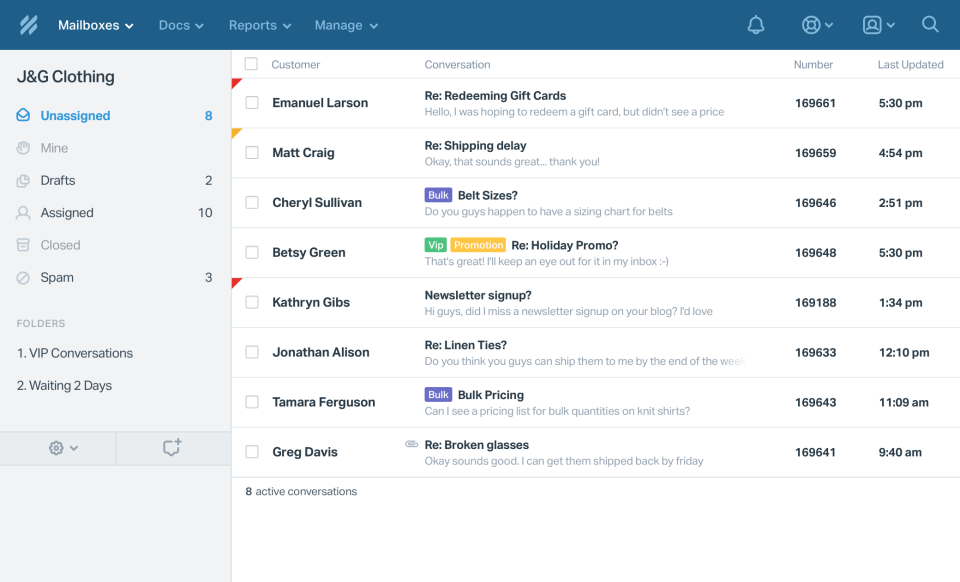 HelpScout is an email management app designed to enhance your relationship with customers. It centralizes email and other points of contact into a dashboard, where customer service agents can answer queries, sort out queues and add notes to other agents to help with context.
HelpScout is an email management app designed to enhance your relationship with customers. It centralizes email and other points of contact into a dashboard, where customer service agents can answer queries, sort out queues and add notes to other agents to help with context.
Some resources that make it one of the best email management apps are collision detection and customer profiles. When you make sure no two agents are working on the same task, you enhance productivity and avoid sending confusing messages to your customers. As for the clients’ profiles, they give you a full view of previous interactions so that you can understand the whole context behind the query. With that in mind, you can offer great customer service responses and build your relationships long-term.
Price: $20/user/month (free trial available)
Capterra rating: 4.7 stars
Here’s what a user has said about HelpScout: “It’s a great platform for small to medium scales businesses looking for a help desk platform. It has some key features which cover the majority of everyday needs with the added benefits of additional items which could be used as you expand.”
2. Mailchimp
Mailchimp is a great email management app for those who use email as their main marketing resource. This platform helps you craft interesting messages that connect with your audience, grow your customer base and generate powerful leads.
The main selling point of Mailchimp is growing your ROI for email campaigns: according to Gmail stats, promotional emails are read at a 19% rate. So improving this number can be a game changer for your business.
To make it possible, it comes with tools such as integrated data reports, so you can track your conversions into ecommerce platforms and use Google Analytics to check if your audience is going to your website.
Pricing: from $8.58/month (up to 500 contacts)
Capterra rating: 4.5 stars
Here’s what a travel company director says about Mailchimp: “The tools are very evolved and useful for campaigns with frequent activities and reporting.”
3. Email List Verify
Email List Verify is a top-rated email management software for marketing professionals and sales representatives. One of the main concerns when building a CRM system is making sure your customer database is updated, usable and practical for your company.
One of the key features is the hard bounce checker, a tool that sends verifications to see if an address is valid and receiving incoming mail. There’s also a duplicate remover to avoid cluttering your contacts’ inboxes and a spam-trap checker, to make sure your emails don’t get flagged.
Overall, this is one of the best email management software because you can use it as a base. With reliable email lists, you can develop better CRM practices and campaigns.
Pricing: $4/1000 emails (pay-as-you-need and subscription models available)
Capterra rating: 4.4 stars
Here’s what a medium-sized business development director has to say: “We maintain a contact database with thousands of email addresses so it’s very hard to spot duplicate entries and email addresses. With the email duplicate remover, I can catch duplicate emails, which helps towards maintaining the data integrity of our database.”
4. Xero
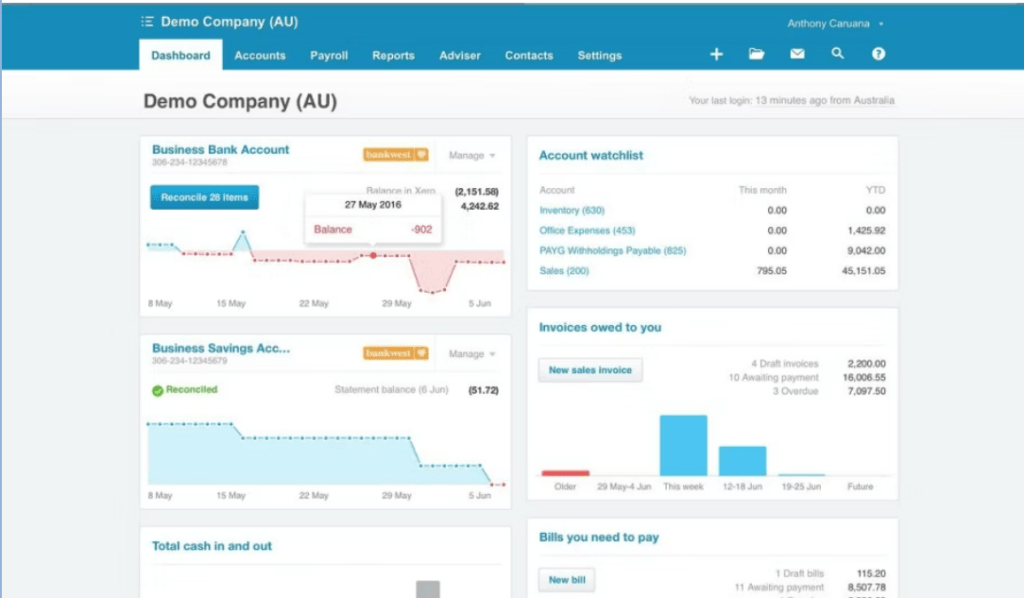 Xero is an accounting tool that doubles as an email management software for account payables teams. Usually, finance and accounting departments receive a lot of different documents and invoices. This is sensitive data due to privacy and time sensitivity. After all, late payments can cause fees, supply issues, and bad relationships with your contractors.
Xero is an accounting tool that doubles as an email management software for account payables teams. Usually, finance and accounting departments receive a lot of different documents and invoices. This is sensitive data due to privacy and time sensitivity. After all, late payments can cause fees, supply issues, and bad relationships with your contractors.
This means keeping up with incoming mail is key and Xero is one of the best email management apps for the job, even though it’s not just that. You can set up a personalized address to which your contacts send their bills and they will be automatically added to the accounting system. The central dashboard helps you track upcoming expenses and never miss any payments.
Pricing: from $15/month
Capterra rating: 4.4 stars
Here’s a helpful review: “The reporting tools are excellent, and the ease of use is so logical and straightforward, that it’s simple l to self-teach even for a beginner.”
5. DragApp
 DragApp is our shared inbox solution to bring all the key productivity resources from the best email management apps right into Gmail itself. It’s a Gmail extension that transforms the usual interface into a powerful, yet easy-to-learn, digital workspace for your entire team. With built-in collaboration tools such as a live chat and email notes, you will never have to forward email threads again.
DragApp is our shared inbox solution to bring all the key productivity resources from the best email management apps right into Gmail itself. It’s a Gmail extension that transforms the usual interface into a powerful, yet easy-to-learn, digital workspace for your entire team. With built-in collaboration tools such as a live chat and email notes, you will never have to forward email threads again.
Drag comes with other resources that make it one of the best email management apps in the market. The automation rules mean your emails can follow a route: filter by subject/sender/keyword and automatically @mention the task assignee. Drag also offers email templates and auto-replies to make sure your inbox is never cluttered.
Another reason users love Drag is the visuals. By turning regular emails into functional Kanban boards, your tasks aren’t lost in email threads, but visible as cards that you can move through the pipeline. Now, everyone can monitor the progress and collaborate. In the same space.
Pricing: from $8/user/month (free version available)
Capterra rating: 4.5 stars
Here’s what a user says about Drag: “Drag is intuitive, easy to use, and most importantly, visual. All necessary features to turn my daily e-mail torrent into meaningful action.”
Finding the best email management software: tips and tricks
When a business manager is choosing between different email management app options, there are a few things to consider. It’s important to make sure the platform itself is useful, sure, but the key factor is certainty that it fulfills your company’s needs.
So while you should look for apps and plugins that offer the services you are looking for (such as email organization and automated workflows), there are other important things to keep in mind. Here are a few of them:
Pricing plans
Not all email management software is created equal. While some can be a one-time purchase, others have subscription plans based on the amount of employees using the platform. This means: that if you’re looking for an inter-department tool, you might need to consider the higher plans, while a small team often works well within lower tiers.
Besides, it’s important to consider what tools are included and which are add-ons, increasing the prices slightly. Some of the best email management apps, like Drag, come with a freemium version, allowing users to benefit from some resources at no extra cost.
Free trials are to be considered as well. Maybe you’re not sure a solution is the right fit, but you can try it for a couple of weeks to get the full platform view. After the trial period, some companies offer annual subscriptions as well, in which you save money by paying upfront.
Compatibility
Most email management apps aren’t full-on platforms. So that brings us to another key factor: integration and workflow compatibility. For example, if you’re using a tool to archive your emails, where are they stored? Is it compatible with Google Drive?
Marketing teams often use a shared space for content planning, but collecting replies requires a multi-channel shared inbox. That way, they can monitor incoming messages from across their points of contact in one place, making it easier to track successful campaigns.
Ease of use
At the end of the day, useful software is software you actually use. So when implementing a new office tool, it’s important to check if there are enough tutorials to get you started or if the developer offers training materials and access to a team member if anything goes wrong. You can also opt for familiar interfaces (such as Drag’s Gmail extension) to make the transition easier.
Once again, free trial periods are great to ensure you and your team can actually implement a certain tool and can get you ahead on the learning curve.
Wrapping up
Finding and using the best email management apps is a great way to keep your digital workplace decluttered. With these tools, you can offer better customer interactions, internal collaboration, accountability, and productivity. The team no longer spends too long trying to find files, explain the context and looking for conversations. In the long run, this means your business can grow while staying clear in its goals and values.
Turn Gmail into your Team’s Workspace.
- 2.5x faster email responses.
- 20 hours less spent per month, per team member.
- 40% more deadlines achieved and happier teams.


